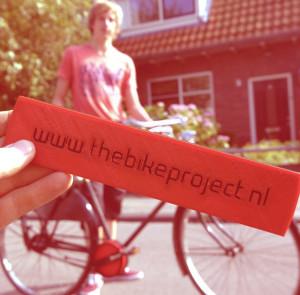 A pair of Dutch industrial design students named Stef de Groot and Paul De Medeiros have started developing the Bike Project, a completely open sourced 3D printable bike called OBI the Open Bicycle. They hope that their hard work will inspire others to customize and 3D print their own bicycle, and once the first working bike has been completed, the designers will release their designs for free. Anyone will be invited to improve, customize or alter OBI to suit their own individual needs. The goal is to create a template that will allow anyone to build a fully-functional bicycle for about $450 in parts and materials.
A pair of Dutch industrial design students named Stef de Groot and Paul De Medeiros have started developing the Bike Project, a completely open sourced 3D printable bike called OBI the Open Bicycle. They hope that their hard work will inspire others to customize and 3D print their own bicycle, and once the first working bike has been completed, the designers will release their designs for free. Anyone will be invited to improve, customize or alter OBI to suit their own individual needs. The goal is to create a template that will allow anyone to build a fully-functional bicycle for about $450 in parts and materials.
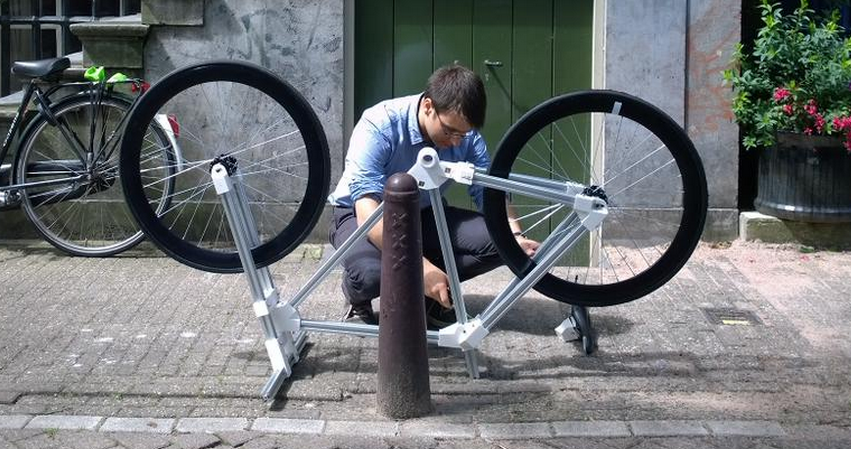 Because OBI will be made almost entirely of 3D printed parts only a handful of the bike components will need to be sourced. De Medeiros and de Groot also say that OBI will be the first truly modular bicycle, so virtually every part can be easily replaced without requiring any specialized tools. So if the bike is damaged or a part is broken, there will be no need to buy expensive replacements or take it to an expensive repair shop since the part can simply be reprinted and easily changed. And because it will be open source, all of the parts can be improved, customized or altered to suit the needs of each individual user.
Because OBI will be made almost entirely of 3D printed parts only a handful of the bike components will need to be sourced. De Medeiros and de Groot also say that OBI will be the first truly modular bicycle, so virtually every part can be easily replaced without requiring any specialized tools. So if the bike is damaged or a part is broken, there will be no need to buy expensive replacements or take it to an expensive repair shop since the part can simply be reprinted and easily changed. And because it will be open source, all of the parts can be improved, customized or altered to suit the needs of each individual user.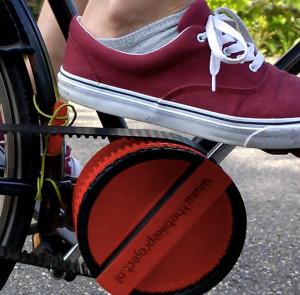
“We wanted to design a 3D printed bicycle because we felt that the options for consumer 3D printing are still very limited. We noticed that consumers, after having access to 3D printers for a couple of weeks and printing their fill of bottle openers and action figures, become disillusioned with 3D printing. They often lose their enthusiasm because they see no real value of 3D printing for their everyday lives. With The Bike Project, we wanted to make a major push towards a future we believe in; where anyone with access to a 3D printer and internet, will be able to manufacture tools/products that they will use in their everyday lives, and that those around them can use in their everyday lives,” De Medeiros wrote on the Autodesk Fusion 360 Community page.
De Medeiros and de Groot started the Bike Project using their school’s standard Solidworks CAD software package. But when they wanted to try adding some organic shapes to the design they found Solidworks to be limited, so they gave Autodesk’s Fusion 360 a try. While the pair decided against incorporating organic shapes into the bike frame they continued to use Fusion 360 because it offered them better collaborative tools like version control and shared cloud access.
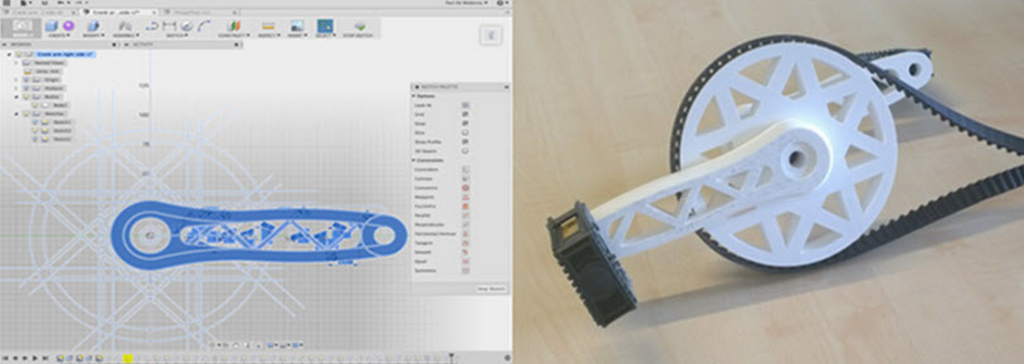 This was essential because De Medeiros and de Groot work from different locations, each taking on the task of designing different components. When they were using Solidworks their workflow was slow and tedious, and the pair often weren’t sure if they had the others most up to date version of the design. That meant that they were constantly needing to contact each other while they were working and verify that the files that they had shared on Dropbox were completely up to date. But Fusion 360 allows them to share a single file and always know which is the most up to date version that the other is working on.
This was essential because De Medeiros and de Groot work from different locations, each taking on the task of designing different components. When they were using Solidworks their workflow was slow and tedious, and the pair often weren’t sure if they had the others most up to date version of the design. That meant that they were constantly needing to contact each other while they were working and verify that the files that they had shared on Dropbox were completely up to date. But Fusion 360 allows them to share a single file and always know which is the most up to date version that the other is working on.
“Now we have all our files in one Fusion 360 folder. We still divide the design up in parts, but we’re no longer afraid to open up each other’s files, snoop around to see each other’s progress or measure up the size of a part,” De Medeiros continues.
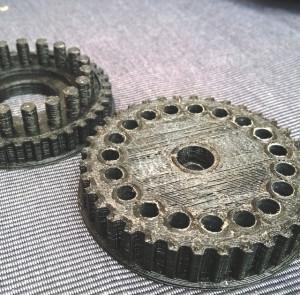 Back in July De Medeiros and de Groot completed their first OBI prototype and are currently in the middle of designing their second which should be completed shortly. And the pair have already started planning what they believe to be their third and final iteration. Currently De Medeiros and de Groot are working on ways to optimize the bike frame so it uses less material, reduces the time required to print each part. The hope is that they can make the completed bike frame stronger, and they are also developing a fully 3D printed drivetrain to further reduce the need for sourced materials.
Back in July De Medeiros and de Groot completed their first OBI prototype and are currently in the middle of designing their second which should be completed shortly. And the pair have already started planning what they believe to be their third and final iteration. Currently De Medeiros and de Groot are working on ways to optimize the bike frame so it uses less material, reduces the time required to print each part. The hope is that they can make the completed bike frame stronger, and they are also developing a fully 3D printed drivetrain to further reduce the need for sourced materials.
De Medeiros and de Groot are under no illusions that OBI will ever replace traditionally manufactured bicycles. They freely admit that modern bicycles are an efficient design that has been nearly perfected in the century and a half since they were invented. They simply hope that OBI will be a new option for people looking for a new bike, and that it will offer a new perspective on what a bicycle can be.
Let us know your thoughts on this project in the 3D Printed OBI forum thread on 3DPB.com.
Subscribe to Our Email Newsletter
Stay up-to-date on all the latest news from the 3D printing industry and receive information and offers from third party vendors.
Print Services
Upload your 3D Models and get them printed quickly and efficiently.
You May Also Like
Nikon SLM Solutions Sells SLM 500 to Primary Weapon Systems to Expand Suppressor Production
Primary Weapons Systems (PWS) is a Boise, Idaho-based manufacturer of suppressors, firearms, and related components. A subsidiary of Vigilant Gear and a sister company to aftermarket Glock slide manufacturer Lone...
3DPOD 261: Tooling and Cooling for AM with Jason Murphy, NXC MFG
Jason Murphy´s NXC MFG (Next Chapter Manufacturing) is not a generalist service; instead, the company specializes in making tooling. Using LPBF and binder jet, the company produces some of the...
HP and Firestorm Labs Form Partnership to Use Multi Jet Fusion 3D Printers in Deployable Factories
HP Inc., maker of a range of additive manufacturing (AM) solutions including the Multi Jet Fusion (MJF) ecosystem, has announced a partnership with Firestorm Labs, a developer of containerized, deployable...
3D Printing News Briefs, July 2, 2025: Copper Alloys, Defense Manufacturing, & More
We’re starting off with metals in today’s 3D Printing News Briefs, as Farsoon has unveiled a large-scale AM solution for copper alloys, and Meltio used its wire-laser metal solution to...
































